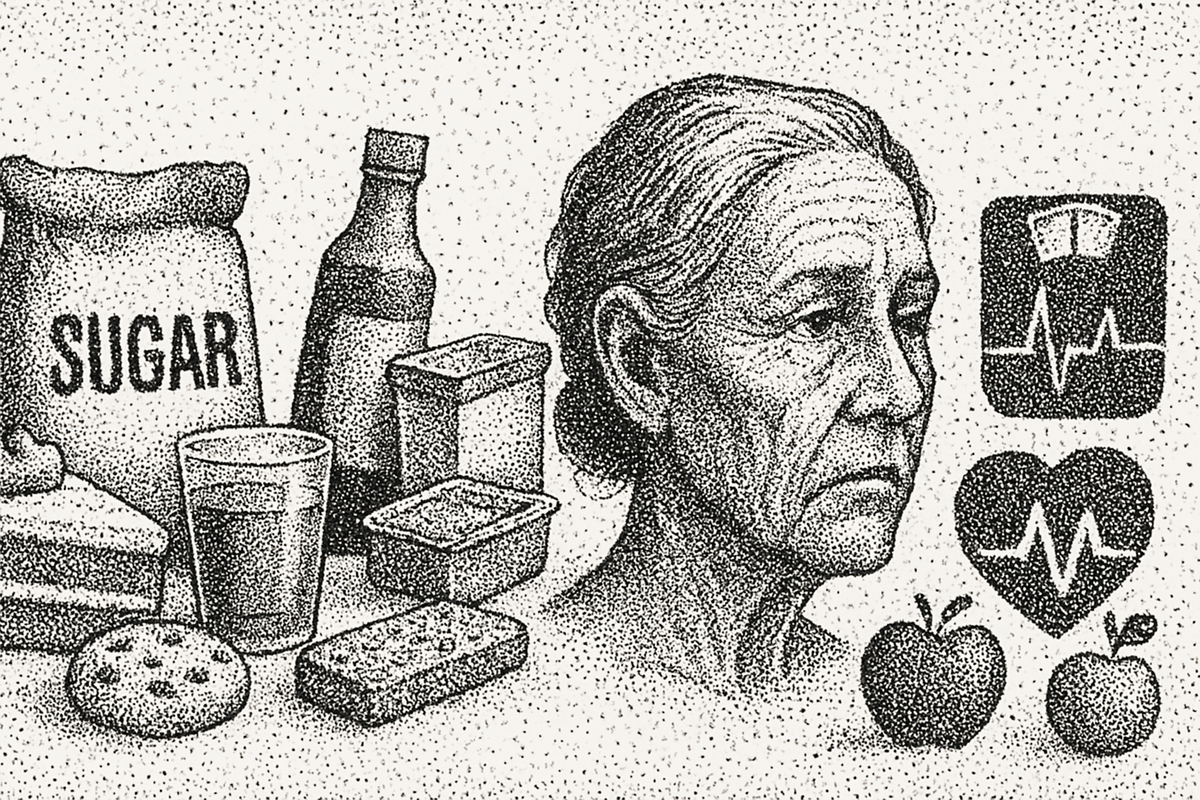Sugar, Sugar Everywhere: The Sweet Sneak Attack on Your Life

What is Sugar?
Sugar, a common carbohydrate, plays a significant role in our diets, often extending beyond obvious sweet treats into processed foods. This note explores how sugar is used, its prevalence, recommended intake levels, consumption patterns in America, health impacts, and strategies for reduction, providing a detailed overview for informed dietary choices.
Common Uses of Sugar
Sugar, primarily sucrose from sugar cane or beets, is widely used for sweetening. It's essential in baking, creating desserts like cakes and cookies, and in preserves like jams and jellies, where it also acts as a preservative. Beyond these, sugar enhances flavors in beverages, from sodas to coffee, and is found in unexpected places like ketchup and salad dressings, contributing to its pervasive presence in diets.
Prevalence in Everyday Products
Sugar's ubiquity extends to processed foods, where it's added to balance flavors in savory snacks, condiments, and even some meats. This hidden sugar makes it challenging to avoid, as it's often not immediately recognizable, lurking in items perceived as healthy, such as flavored yogurts or granola bars.
Recommended Daily Intake for Added Sugars
The RDI for added sugars varies by organization. The FDA sets a Daily Value of 50 grams per day for a 2,000-calorie diet, aligning with the Dietary Guidelines for Americans' recommendation of less than 10% of daily calories from added sugars (Added Sugars on the Nutrition Facts Label | FDA). The AHA, however, suggests stricter limits: 36 grams (9 teaspoons) for men and 25 grams (6 teaspoons) for women, based on 6% of daily calories (Added Sugars | American Heart Association). This discrepancy highlights a controversy, with the AHA advocating for lower intake to reduce health risks.
American Consumption Patterns
Data indicates Americans exceed these recommendations. On average, adult men consume 19 teaspoons (76 grams) and women 15 teaspoons (60 grams) of added sugars daily, according to the CDC (Be Smart About Sugar | Healthy Weight and Growth | CDC). This exceeds both the FDA's 50 grams and AHA's lower limits, with 3 in 5 Americans over age 2 consuming more than recommended, underscoring a public health concern.
Detrimental Effects on Skin, Body, and Overall Health
Excess sugar consumption has significant health implications:
- Skin Health: Research suggests sugar causes glycation, damaging collagen and elastin, leading to wrinkles and saggy skin (How Does Excess Sugar Impact Skin Health? - Advanced Orthomolecular Research). It also triggers inflammation, exacerbating acne, rosacea, and psoriasis, and can result in dull, less vibrant skin.
- Overall Health: The evidence leans toward excess sugar contributing to obesity, type 2 diabetes, heart disease, and liver disease due to fructose processing (11 Reasons Why Too Much Sugar Is Bad for You). It also increases cancer risk, promotes dental issues, and may affect mental health, linking to depression and anxiety.
Strategies for Lowering Added Sugar Consumption
Reducing added sugar intake involves practical steps:
- Read Food Labels: Identify added sugars listed as sucrose, glucose, or high-fructose corn syrup, helping avoid high-sugar products.
- Choose Whole Fruits: Opt for fresh fruits over juices or dried fruits with added sugars to get natural sweetness without extras.
- Drink Water or Unsweetened Beverages: Swap sodas and energy drinks for water, unsweetened tea, or coffee to cut significant sugar sources.
- Use Less Sugar in Cooking and Baking: Reduce sugar in recipes by one-third to half or use natural sweeteners like honey sparingly, adjusting taste over time.
- Opt for Plain Foods: Choose plain yogurt and add natural flavors like fruits or spices instead of sweetened versions.
- Gradual Reduction: Gradually decrease sugar in hot drinks or cereals, allowing taste buds to adjust to less sweetness.
- Plan Meals with Whole Foods: Focus on whole, unprocessed foods to minimize hidden sugars, planning snacks and meals accordingly.
- Be Mindful of Portion Sizes: Limit dessert portions to manage intake, enjoying treats in moderation.
- Track Sugar Intake: Use a food diary or app to monitor daily sugar consumption, identifying patterns for adjustment.
- Seek Support: Consult friends, family, or a nutritionist for encouragement and personalized advice, especially for dietary changes.
These strategies, supported by resources like the AHA's tips (Tips for Cutting Down on Sugar | American Heart Association) and NHS guidance (How to cut down on sugar in your diet - NHS), offer a comprehensive approach to reducing sugar intake.
Conclusion
Sugar's pervasive presence and health impacts necessitate informed choices. By understanding its uses, recommended limits, and effects, and implementing reduction strategies, individuals can mitigate risks, promoting healthier lifestyles. This detailed analysis underscores the importance of awareness and action in managing sugar consumption.
Key Citations
- Added Sugars on the Nutrition Facts Label | FDA
- Added Sugars | American Heart Association
- Be Smart About Sugar | Healthy Weight and Growth | CDC
- How Does Excess Sugar Impact Skin Health? - Advanced Orthomolecular Research
- 11 Reasons Why Too Much Sugar Is Bad for You
- Tips for Cutting Down on Sugar | American Heart Association
- How to cut down on sugar in your diet - NHS




Comments ()